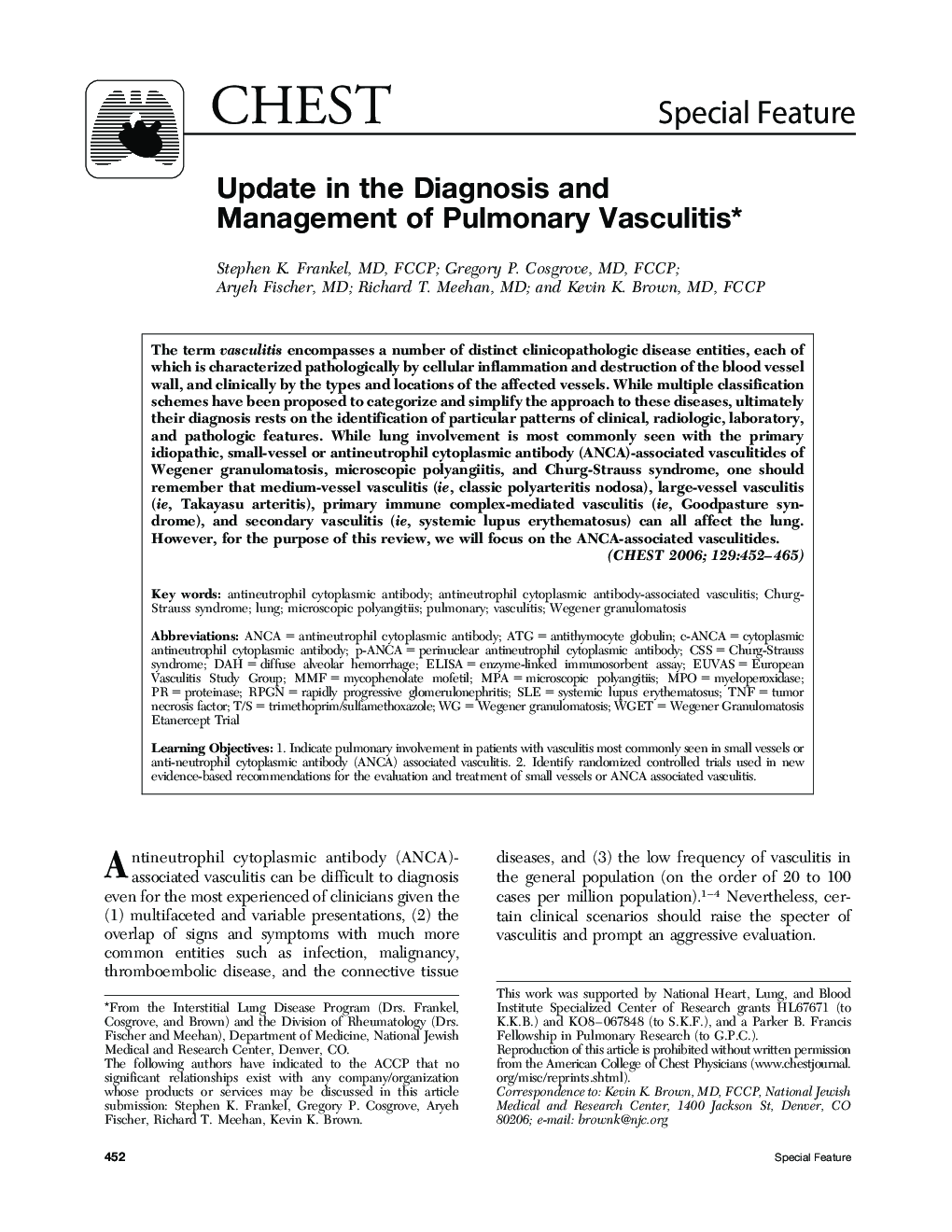| Article ID | Journal | Published Year | Pages | File Type |
|---|---|---|---|---|
| 2906171 | Chest | 2006 | 14 Pages |
The term vasculitis encompasses a number of distinct clinicopathologic disease entities, each of which is characterized pathologically by cellular inflammation and destruction of the blood vessel wall, and clinically by the types and locations of the affected vessels. While multiple classification schemes have been proposed to categorize and simplify the approach to these diseases, ultimately their diagnosis rests on the identification of particular patterns of clinical, radiologic, laboratory, and pathologic features. While lung involvement is most commonly seen with the primary idiopathic, small-vessel or antineutrophil cytoplasmic antibody (ANCA)-associated vasculitides of Wegener granulomatosis, microscopic polyangiitis, and Churg-Strauss syndrome, one should remember that medium-vessel vasculitis (ie, classic polyarteritis nodosa), large-vessel vasculitis (ie, Takayasu arteritis), primary immune complex-mediated vasculitis (ie, Goodpasture syndrome), and secondary vasculitis (ie, systemic lupus erythematosus) can all affect the lung. However, for the purpose of this review, we will focus on the ANCA-associated vasculitides.Learning Objectives1. Indicate pulmonary involvement in patients with vasculitis most commonly seen in small vessels or anti-neutrophil cytoplasmic antibody (ANCA) associated vasculitis 2. Identify randomized controlled trials used in new evidence-based recommendations for the evaluation and treatment of small vessels or ANCA associated vasculitis.
